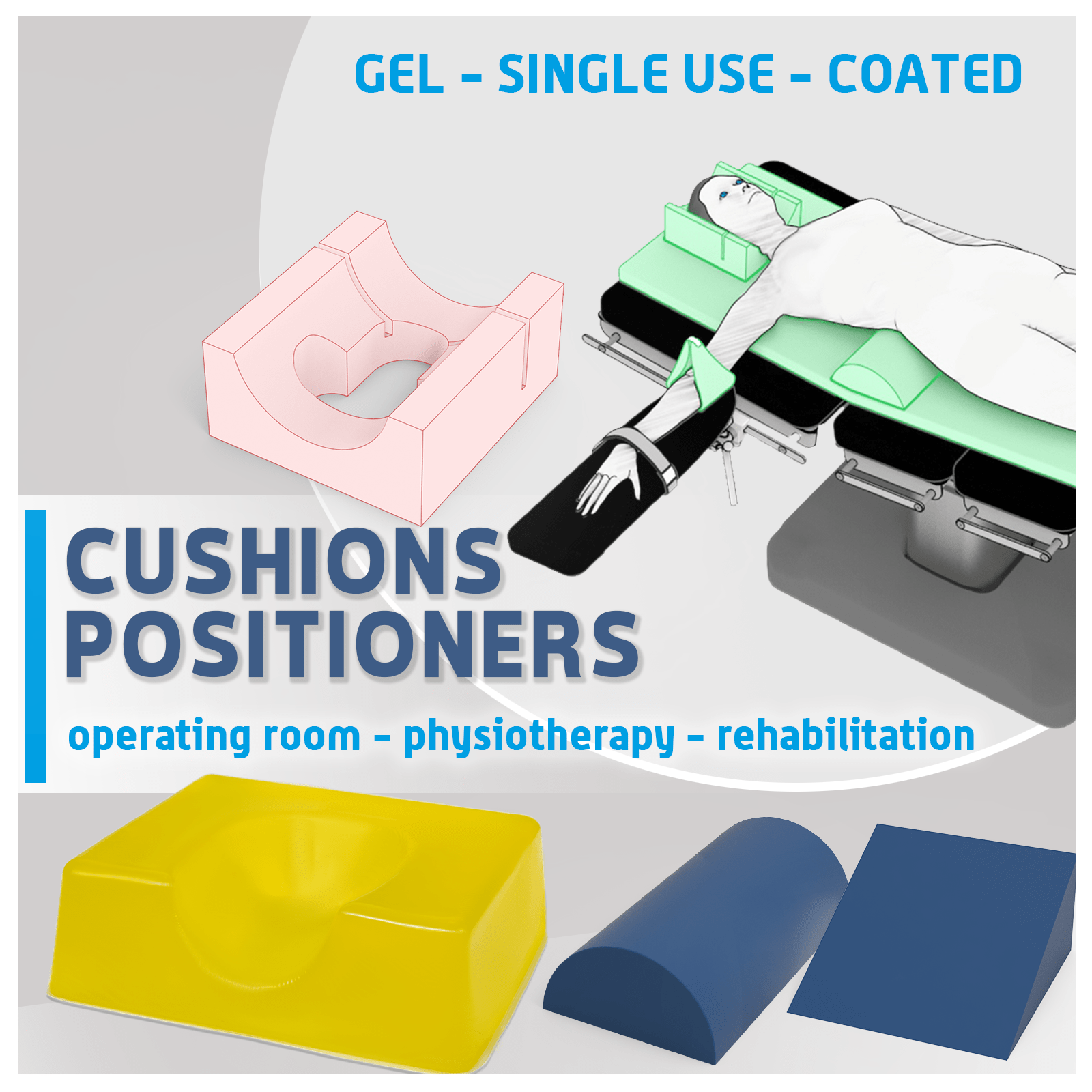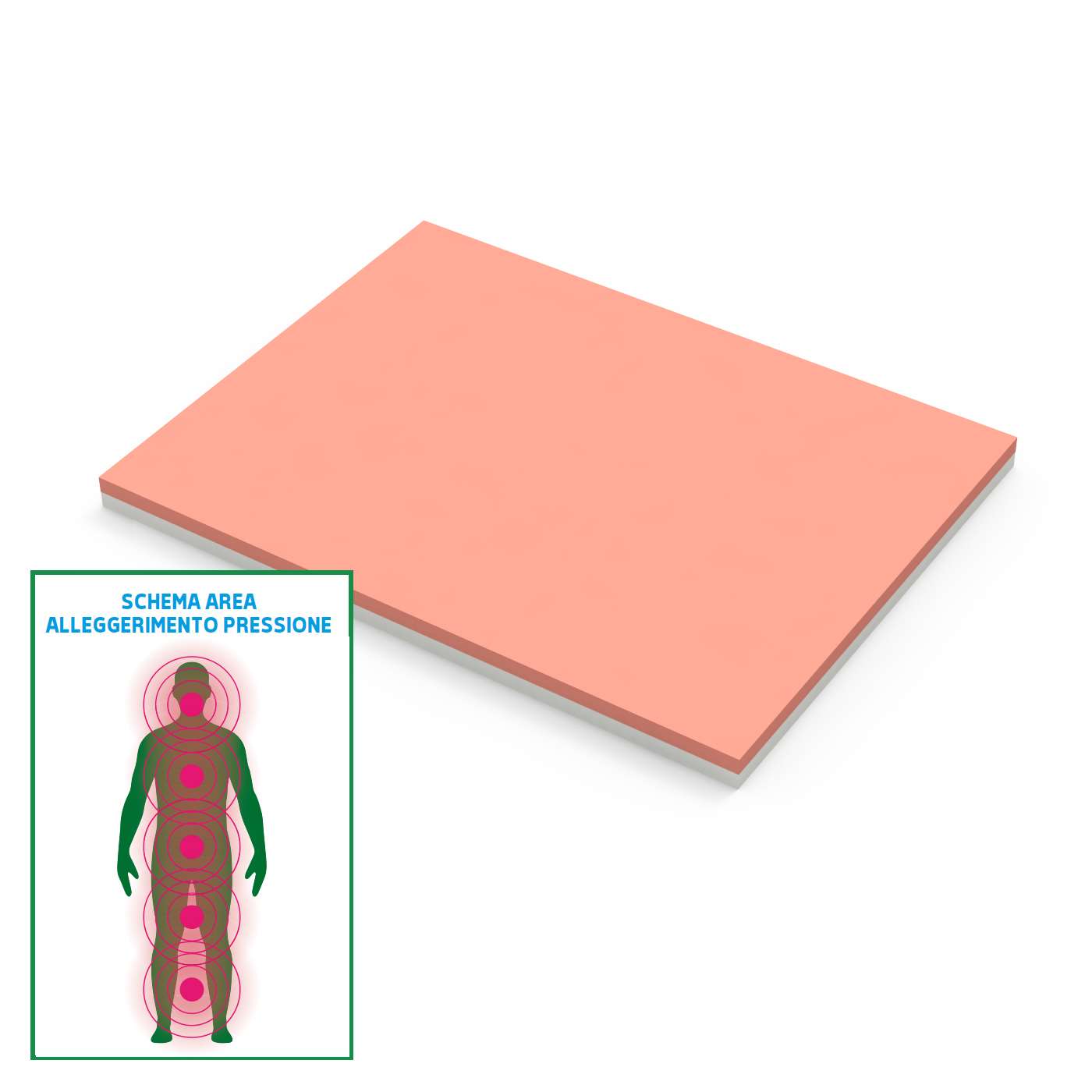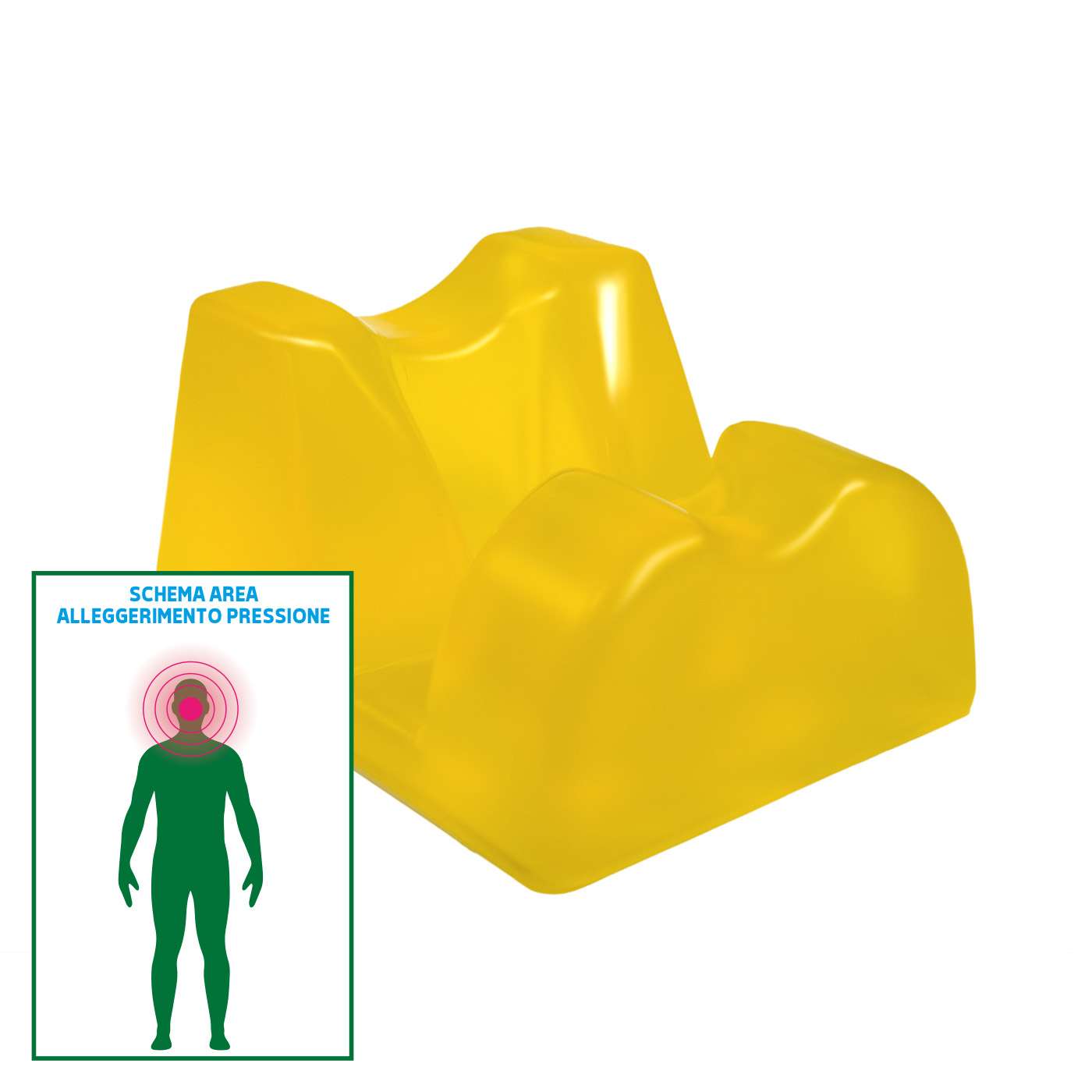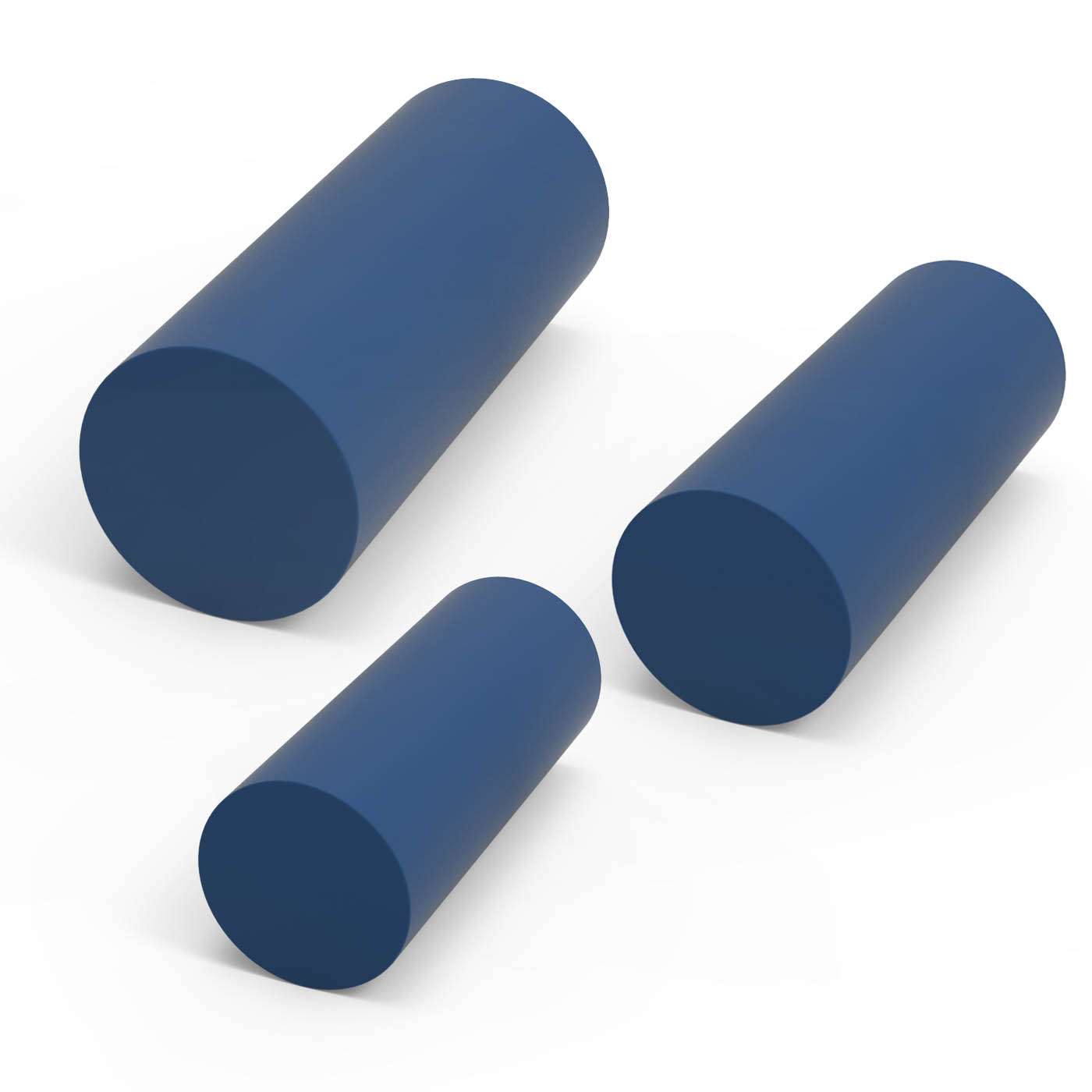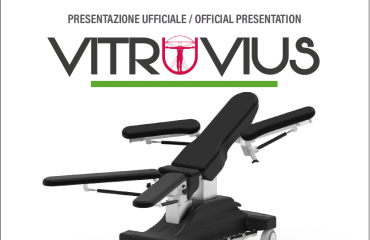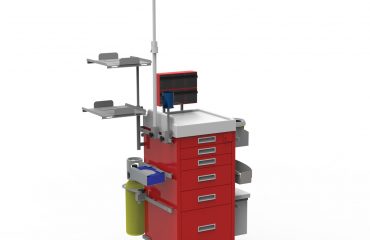An important step in any surgical procedure is the positioning of the patient on the operating table. It should aim to ensure patient’s safety and provide optimal exposure of the surgical site.
Correct positioning on the one hand facilitates the surgeon’s work (and consequently can help shorten the duration of surgery), while on the other hand help maintaining ventilation and circulation, also reducing the risk of ulcers, pressure sores, nerve injuries. In fact, under local or general anaesthesia the patient gradually loses consciousness, motor skills or at least sensitivity to touch and pain. He is therefore unable to perceive and react to mechanical stresses or potentially harmful external stimuli, either related to the position in which he is placed on the operating table or caused unintentionally and unconsciously by the surgical team: friction, rubbing, excessive and prolonged pressure, shocks, burns. Therefore, it would be advisable to choose appropriate positioning devices that ensure proper pressure distribution and optimal lung ventilation while keeping the patient in the right position throughout the procedure.
Excessive pressure causes a reduction in the blood flow, which, if prolonged, can generate tissue injury. The combination of pression, shearing and friction, especially at bony prominences, can lead to the occurrence of pressure sores. In the occipital area, prolonged pressure can cause postoperative alopecia. As for nerves injuries, damages can range from temporary loss of motor sensation to permanent paralysis. The areas most frequently affected by these postoperative complications are brachial plexus, median nerve, ulnar nerve, radial nerve, lumbosacral plexus, and peroneal nerve.
The body parts most at risk may vary depending on the surgical position in which the patient is placed. In any case, a gel or polyurethane foam pad covering the entire surface of the operating table could be used to provide better pressure distribution throughout the body. It can possibly be supplemented with specific positioners that protect and stabilize critical points. Without prejudice to the fact that the experience of the surgeon and the surgical team will suggest to them what is the most effective use of a certain positioner or the most suitable device for a given purpose, it is possible to identify certain types of positioners that are particularly suitable for the main surgical positions.
In the supine position the recommended surgical positioners could be:
- a full-length pad
- a headrest (enveloping in case of Trendelenburg or reverse Trendelenburg or thyroid-specific if neck hyperextension is needed)
- a pad to cover the armrest
- an elbow protection and a heel support.
In the lateral position the recommended surgical positioners could be:
- a full-length pad
- a wedge with a channel for inserting the arm and the shoulder of the dependent side
- a protective band for the ankles
- a pad to protect the other arm (whether it is hanging from the bow of the surgical bed or resting on the arm support)
- a pad to cover the thrust pad at the level of the abdomen
- a pad to cushion the pressure and friction between the two legs or between the dependent leg and the procedure bed, especially nearby the knee.
In the lithotomy position the recommended surgical positioners could be:
- a full-length pad
- a headrest
- arm and elbow protections
- specific pads to cover the boot-type stirrups supporting foot and calf.
In the prone position the recommended surgical positioners could be:
- a full-length pad
- a specific headrest that allows the passage of air and endotracheal tubes
- gel or polyurethane foam positioning pillows to be placed under the chest and pelvis to allow thoracic and abdominal expansion
- gel or polyurethane foam positioning pillows to be placed under the ankles
- wedges for achieving a particular inclination of the upper or lower body.
The range of Positioning Cushions
Sources:
Il posizionamento del paziente in sala operatoria, pubblicato su «www.area-c54.it», disponibile per il download all’indirizzo http://www.area-c54.it/public/il%20posizionamento%20del%20paziente%20in%20sala%20operatoria.pdf. [ultimo accesso giugno 2022]
- Grada, MD, MS, Department of Dermatology, Boston University School of Medicine; T. J. Phillips, MD, Boston University School of Medicine, Piaghe da decubito (Piaghe da decubito; ulcere da decubito; ulcere da compressione; lesioni da compressione), articolo pubblicato su «https://www.msdmanuals.com» disponibile all’indirizzo https://www.msdmanuals.com/it-it/casa/patologie-della-cute/piaghe-da-decubito/piaghe-da-decubito. Ultima revisione/verifica completa ott 2019| Ultima modifica dei contenuti ott 2019. [ultimo accesso giugno 2022]
- Agosta, A. Benedetti et alii, Indicazioni per il corretto posizionamento dell’assistito in sala operatoria, Centrostampa della Regione Emilia-Romagna, ottobre 2019. Il documento è scaricabile in formato pdf dal sito Sicurezza delle cure della Regione Emilia-Romagna http://salute.regione.emilia-romagna.it/assistenza-ospedaliera/sicurezza-cure/sale-operatorie-sicure-sos-net/. [ultimo accesso giugno 2022]
Spruce, L. (2021), Positioning the Patient. AORN J, 114: 75-84. https://doi.org/10.1002/aorn.13442


 Italiano
Italiano  Français
Français  Deutsch
Deutsch  Español
Español  Nederlands
Nederlands  polski
polski  Norsk bokmål
Norsk bokmål  Magyar
Magyar  Română
Română  Dansk
Dansk 